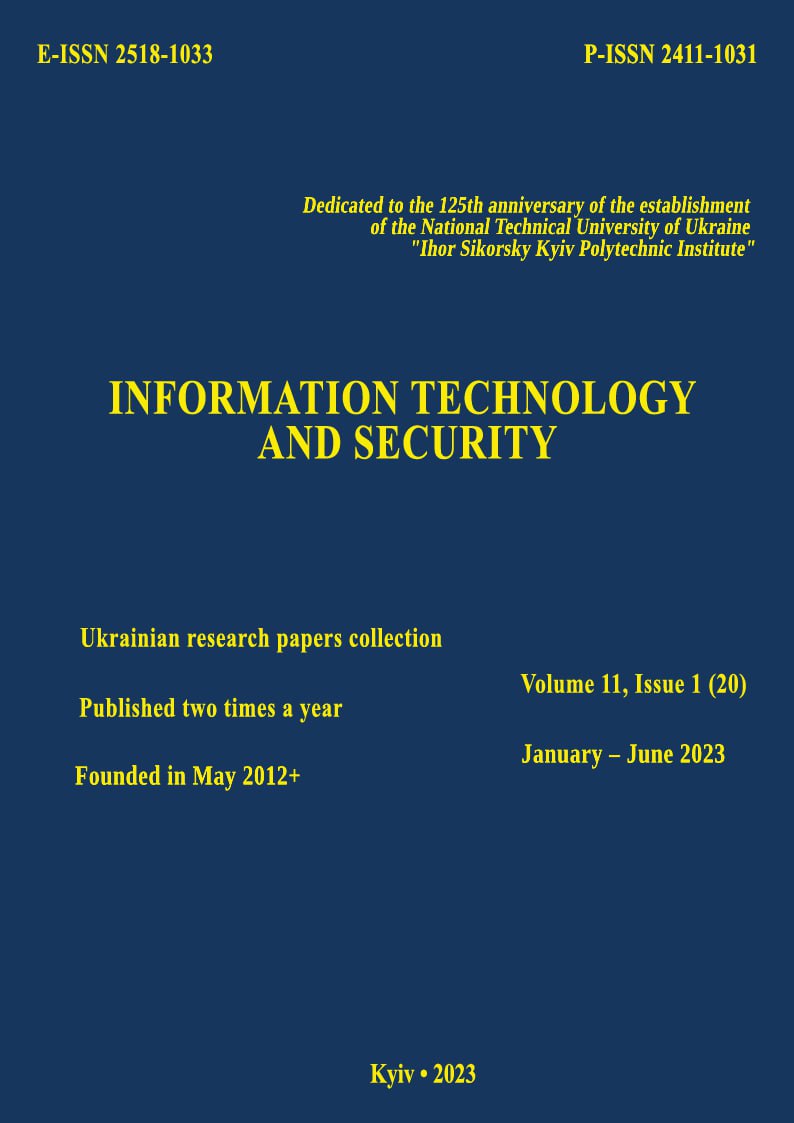Development of antenna system of a new generation tropospheric communication station
DOI:
https://doi.org/10.20535/2411-1031.2023.11.1.283921Keywords:
tropospheric radio communication, ultrashort waves, antenna system, parabolic antenna, irradiator, horn, directional diagramAbstract
Today, means of tropospheric communication play an important role in the organization of communication at distances significantly greater than the distance of direct visibility. The peculiarities of the construction of such lines, in contrast to line-of-sight radio lines, are related to the peculiarities of the propagation of ultrashort waves and their reflection from the inhomogeneities of the troposphere. At the same time, the use of tropospheric stations makes it possible to provide high-quality multi-channel communication at an interval of 150–250 km, while significantly reducing the time for deploying long-distance lines. Along with the advantages, tropospheric means of communication have rather bulky antenna devices and require a significant energy resource. In connection with this, the task of increasing energy efficiency due to the development of antenna systems of tropospheric communication stations that will meet the set requirements arises. In order to solve the problem, a parabolic antenna (a mirror with a diameter of 1.5 m) and two types of irradiators (a linear polarization irradiator and an array of 8 elementary circular polarization irradiators) were proposed as antenna systems for tropospheric communication stations. Verification of the adequacy of the proposed antennas and the possibility of their use on real means of tropospheric communication was carried out in a collimator chamber. In order to confirm the results of the inspection, field tests of the developed antenna system of the tropospheric station were conducted at an interval of 155 km. At the same time, the combined use of the proposed antenna systems for the 80 W transmitter allows for the necessary energy of the tropospheric communication line in the frequency range of 4.5-4.7 GHz.
References
S. V. Marchenko, Devices of ultra-high frequencies. Kamianske, Ukraine: DDTU, 2019.
M. D. Ilyinov et al., Radio communication lines and antenna devices. Kyiv, Ukraine: MITI, 2018.
O. I. Kushnir, K. S. Vasyuta, S. V. Ozerov, A. V. Lytvyn, and A. V. Severilov, “Main trends and prospects for the development of military radio relay communications”, Collection of scientific works of Kharkiv Air Force University, no. 4, рр. 7-11, 2017.
V. G. Sholudko, M. Yu. Yesaulov, O. V. Vakulenko, T. G. Gursky, and M. M. Fomin, Military Communications Organization. Kyiv, Ukraine: MITI, 2017.
T. M. Narytnyk, V. M. Pocherniaev, and V. S. Povhlib, Digital radio relay and tropospheric communication lines. Odesa, Ukraine: ONAC, 2019.
A. N. Jabbar, “A novel ultra-fast ultra-simple adaptive blind beamforming algorithm for smart antenna arrays”, Progress In Electromagnetics Research, vol. 35, 2011. рp. 329-348, doi: https://doi.org/10.2528/PIERB11091504.
O. V. Vakulenko, and B. A. Nikolayenko, SRSH-5000 broadband radio relay station (R-402 radio relay station). Kyiv, Ukraine: ISCIP Igor Sikorskyi KPI, 2019.
E. P. Nesteruk, Radio relay station R-425C3. Kharkiv, Ukraine: KhNAFU, 2015.
M. D. Ilyinov, T. G. Gurskyi, I. V. Borisov, and K. M. Hrytsenok, Radio communication lines and antenna devices. Kyiv, Ukraine: MITI, 2018. pр. 201-218.
Downloads
Published
How to Cite
Issue
Section
License
Copyright (c) 2023 Collection "Information Technology and Security"

This work is licensed under a Creative Commons Attribution 4.0 International License.
The authors that are published in this collection, agree to the following terms:
- The authors reserve the right to authorship of their work and pass the collection right of first publication this work is licensed under the Creative Commons Attribution License, which allows others to freely distribute the published work with the obligatory reference to the authors of the original work and the first publication of the work in this collection.
- The authors have the right to conclude an agreement on exclusive distribution of the work in the form in which it was published this anthology (for example, to place the work in a digital repository institution or to publish in the structure of the monograph), provided that references to the first publication of the work in this collection.
- Policy of the journal allows and encourages the placement of authors on the Internet (for example, in storage facilities or on personal web sites) the manuscript of the work, prior to the submission of the manuscript to the editor, and during its editorial processing, as it contributes to productive scientific discussion and positive effect on the efficiency and dynamics of citations of published work (see The Effect of Open Access).

